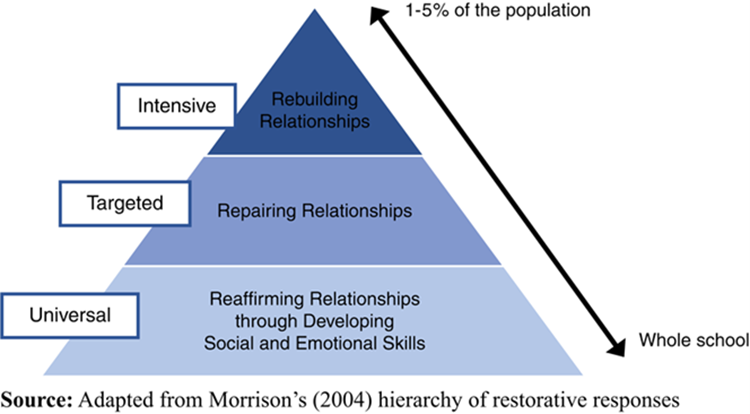Bridgend Youth Justice Service (BYJS) Performance Framework data evidenced that children and young people who are care experienced are overrepresented within BYJS. As a result of this finding, the BYJS restorative team met with the managers of the two local authority residential homes within the borough to discuss how this issue could be tackled.
The managers felt that links with the police could be strengthened so that officers could work proactively with the children in an informal way. They also felt that there was a training need for residential staff in the use of restorative approaches as a response to incidents within the home.
To address these concerns, BYJS arranged a visit to both homes with the BYJS police officer to establish a relationship between care home management and staff and the police. The BYJS police officer encouraged management at the home to call her with any concerns that they have and has committed to linking in with the homes whenever needed. Since this initial meeting the BYJS police officer has been called to visit the homes on several occasions to speak with young people.
With regards to addressing the training gap in restorative approaches, BYJS has proposed the following which has been discussed with and accepted by care home management.
Initially training provided was via online platforms such as Microsoft Teams but as covid restrictions relaxed we were able to deliver face to face sessions. The structure of the training was as follows:
Reference was made to applicable sections of the protocol that identified a restorative approach as an appropriate way of dealing with conflict, the training also references the successful restorative approach taken by Norfolk in their residential settings.

Morrisons hierarchy is used to demonstrate that rebuilding relationships/resolving conflict is only the tip of the iceberg of restorative approaches and that much larger areas are repairing and developing relationships.
The training then runs through Morrisons hierarchy from the bottom up.
Referencing the Social Discipline Window (Wachtel & McCold, 2001) and the United Nations Convention on the Rights of the Child (1989) the training highlights the importance of working with children in a restorative way.
The training then offers some thoughts on how we can work with children in a restorative way referencing the excellent book Restorative Practice (2021) by Mark Finnis.
The training then examines the traditional retributive approach to resolving conflict compared to a restorative approach and introduces the 5 Restorative Themes (Transforming Conflict) and explores the use of restorative questions to repair relationships. At this point the RJC Principles of Restorative Practice are also introduced (Restorative Justice Council)
The training then looks at more formal ways of resolving conflict such as the use of restorative conferences.
Finnis, M. (2021) Restorative Practice, Independent Thinking Press, Camarthan
Morrison (2005) Restorative Justice in Schools. In E. Elliott & R. M. Gordon (Eds.), New Directions in Restorative Justice (pp. 26–52). Cullompton, Devon: Willan Publishing
Restorative Justice Council (2022) Principles of Restorative Practice
Transforming Conflict. (2022) Restorative Approaches, Transforming Conflict Website.
Wachtel, T., and McCold, P. (2001) ‘Restorative justice in everyday life’ in Braithwaite, J. and Strang, H. (Eds.), Restorative Justice in Civil Society (pp. 117-125) Cambridge University